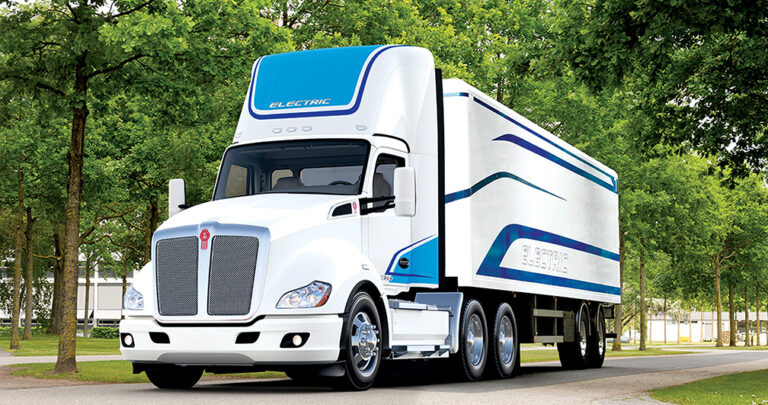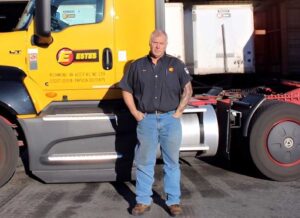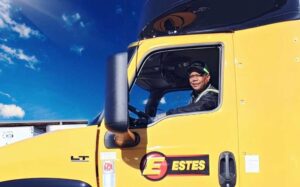In September, New York Gov. Kathy Hochul signed into law a bill that effectively outlawed conventional vehicles starting in 2035 — with heavy trucks to follow a decade later — thus aligning the Empire State with California and others in the latest step framed as mandatory to arrest pollution and save the planet.
“We must reduce emissions from the transportation sector, currently the largest source of the state’s climate pollution,” Hochul said at the time. “The new law and regulation mark a critical milestone in our efforts and will further advance the transition to clean electric vehicles, while helping to reduce emissions in communities that have been overburdened by pollution from cars and trucks for decades.”
Such measures are highly controversial. They are applauded as loudly by environmentalists who see radical change as the last hope for the ozone as they are criticized by members of the commercial transportation industry for being impractical.
One thing upon which all parties can agree is this: The current state of the industry has its roots in a decades-long effort to reduce emissions.
“Since 1996, the Environmental Protection Agency (EPA) has been instituting increasingly aggressive regulations to reduce the allowable emissions from diesel engines,” said Rick Mihelic, director of emerging technologies with the North American Council for Freight Efficiency (NACFE). “About every four years there’s a new standard that is ratcheted down even further, and we have been doing that since 1996.”
The EPA’s consistent pattern of ramping up of emissions standards actually has its roots in the Clean Air Act of 1963. This pivotal act is the nation’s primary federal air-quality law, and is considered to be the first and most influential modern environmental laws on the books. The statute was followed by the beefier Clean Air Act of 1970, which roughly coincided with the creation of the EPA itself. Amendments were added to the statute in 1977 and 1990; the latter amendment featured a greatly expanded program for controlling toxic air pollutants.
Regulatory officials strove for net zero emissions, meaning the emissions going into the atmosphere were level with what was being taken out. And, per statistics provided by the EPA, it appears to be working.
Since 1990, the agency reports, eight-hour carbon monoxide levels are down 73%, and annual nitrogen dioxide levels are down 61%. Other, more recent, trends include three-month lead readings down 86% compared to 2010 levels, and annual particulate matter down 41% since 2000.
“The trucking industry has risen to the challenge and been meeting that staircase of requirements,” Mihelic said. “We’re getting to the point where it’s getting very, very difficult to go further. The numbers are so low already that it’s really technically complicated to meet all the requirements at the same time.
“We have some regulations called GHG 1 and 2. The GHG 2 regulations went into effect in 2016 and they’re effective from basically now through 2027 model years,” he continued. “They are working on the next generation of rules beyond 2027 now, but it’s very challenging for a diesel to meet the requirements beyond 2027.”
Despite this progress, no one believed true zero emissions were possible with combustion engine technology, as even the most efficient gasoline or diesel vehicle will give off something. Hence, the idea of zero emissions was little more than a pipe dream.
“’Zero emissions’ refers to, actually, zero emissions,” Mihelic explained. “What you’re looking at with solar power, wind power — those are creating electricity with essentially no emissions. With a diesel engine, it generates both types of emissions, CO2 and particulates. The difference between zero emission and net zero is that zero emission is really you’re not emitting anything. Physically, nothing coming out is harmful.”
Enter the modern electric vehicle, which has been around in one incarnation or another since the late 1800s. In 21st century, this technology for the first time provided a path toward zero emissions that experts say diesel engines as a species simply cannot deliver. Regulatory and legislative interests have been quick to advocate to advocate these vehicles.
Standards to be rolled out next year by the EPA list guidelines through 2030 that are so aggressive they’re a de facto nudge into electric vehicles. That, bolstered by the aforementioned state statutes, has painted both truck manufacturers and operators into a corner.
“If you think of the letter ’S’ as representing how technology gets absorbed into industry, we’re at the bottom left corner of the S. We’re just starting,” Mihelic said. “There are on the order of hundreds of prototype vehicles on the road that are using fuel-cell technology or battery electric technology or some permutation of those.
“The industry has something along the order of 2.4 million Class 8 trucks and maybe 8 million other types of trucks,” he noted. “So, we’re a long way from being able to replace the existing vehicles that are out there. If you think about having to replace 2.4 million trucks, it takes a while. Even if every truck was new technology it would take a number of years — I’d estimate 15 to 20 years — to actually replace all the old trucks.”
Thus, truck manufacturers have wasted no time ramping up research and development of electric models. In a speech delivered Sept. 28, Kenworth’s Chief Engineer Joe Adams gave some pertinent insights into the company’s march into this new frontier.
“(Looking) at what is driving zero-emissions technologies today, I think it boils down to four key categories. The first is regulatory changes,” he said. “Second, many companies today have strong sustainability and green initiatives. And it is not just fleets striving for these green objectives; many end customers are also demanding green from our industry.
“Total cost of ownership is another thing that I believe is driving greater demand for zero-emissions vehicles,” Adams continued. “And finally, technology readiness. I think this is probably one of the most important categories because our customers still demand premium, durable and reliable trucks no matter what powertrain they choose.”
Adams went on to tell the audience how electric trucks already compare favorably with their diesel counterparts.
“Right now, we have several areas where battery electric vehicles have benefits, starting with the cost of fuel, or maybe better said, the cost of energy per mile,” he said. “Diesel fuel is an efficient source of energy, like it or not, so beating diesel is not easy. However, we know that diesel fuel prices fluctuate generally more than what we have seen for electricity, and electricity has a better opportunity for green production through hydro, wind and solar production. For most customer routes, the daily energy bill will be 50% lower with a battery-electric truck.
“Another total cost of ownership benefit of battery-electric vehicles is lower maintenance,” he noted. “Simply said, we have fewer moving parts, and we don’t have to deal with aftertreatment systems. We estimate that maintenance will be 30% lower with battery electric vehicles.”
That’s all well and good, says Mihelic, but it’s not a panacea for what ails the still-evolving technology.
“Electric vehicles are a solution for some duty cycles but they’re not a solution for all of them,” Mihelic said. “I describe the diesel truck as the ‘Swiss Army knife’ of vehicles, because if you bought a sleeper truck it will do the whole thing. It doesn’t do it well, but it does everything.
“Electric vehicles can’t do everything, and fuel cell vehicles can’t do everything,” he continued. “Right now, battery electric-vehicles work really well for medium-duty Class 2B through Class 6, where the distances are fairly short, and the freight weights really aren’t an issue. Frito Lay, Pepsi, Budweiser — they’re using battery-electric trucks to deliver beverages to grocery stores. The reason that’s possible is that the vehicles don’t travel very far.”
Operators by and large understand vehicle limitations and manufacturers’ lack of production capacity are normal side effects of introducing new technology. But what many find objectionable is state and federal legislation mandating a switch to all-electric trucks instead of letting the market factors hold sway.
“We, as an industry, want to be good stewards of our environment, just like everybody else does,” said Adam Blanchard, CEO of San Antonio-based Double Diamond Trucking. “We want to make sure that we leave this world cleaner and better than it was.”
However, Blanchard says, there are several factors to consider about the viability of electric-powered over-the-road trucks.
“We don’t have the infrastructure in place to accomplish that. There’s weight issues associated with it. These trucks with batteries on them are a lot heavier. That’s going to impact the volume and the amount of goods that we can transport,” he explained.
“To me, at this particular juncture it seems like we’re focusing on electric vehicles when in reality that may not be the best technology to have zero-emissions trucks,” he continued. “From what I understand, we need to look more at the hydrogen vehicles. Again, that’s a lack of the infrastructure and the cost component for hydrogen fuel is not there yet.”
Blanchard said that in kowtowing to environmental concerns, many lawmakers miss a bigger picture, something that’s playing out in the supply chain issues experienced currently.
“We, as an industry, are behind trying to get to zero emissions. But we also are responsible for making sure that everybody has the essential goods that they need and keeping shelves stocked,” he said. “We need to be thoughtful and patient about making sure that, if we’re going to make this transition, we make it in a way that is not going to continue to affect the supply chain.”
Dwain Hebda is a freelance journalist, author, editor and storyteller in Little Rock, Arkansas. In addition to The Trucker, his work appears in more than 35 publications across multiple states each year. Hebda’s writing has been awarded by the Society of Professional Journalists and a Finalist in Best Of Arkansas rankings by AY Magazine. He is president of Ya!Mule Wordsmiths, which provides editorial services to publications and companies.
















Let’s get one thing straight. There is NO such thing as zero emissions anything, but one exception, in the housing industry in PASSIVE solar homes. All other so-called zero emissions solutions are anything BUT. You can’t say I’ll use electric motors and forget about the electric supplier’s emissions.